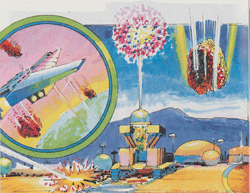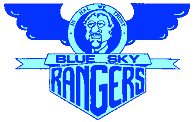Astrosmash






INTELLIVISION CARTRIDGE [Mattel Electronics #3605]
Release #23 October 15,1981
Also released by Sears
Working titles: Rocks, Meteor! + Avalanche
Design & Program: John Sohl
Package Illustration: Jerrol Richardson



PRODUCTION HISTORY
Astrosmash started out as Meteor!, a clone of the arcade game Asteroids. The game wasn't very big, so John Sohl used the extra room in the cartridge to come up with a variation called Avalanche! using the same graphics and sound effects. At the last minute, the Mattel lawyers killed the Asteroids-like Meteor!, afraid of a lawsuit from Atari. Rather than risk introducing bugs by deleting code, John simply put a branch around the opening-screen menu straight into the Avalanche! variation, which was released under the name Astrosmash.
John admits he wasn't sorry to see Meteor! go -- he hadn't been happy with the game, much preferring the Avalanche! version.
Astrosmash quickly became one of the most popular Intellivision games thanks in large part to a very simple tecnique John programmed in: like most arcade-style games, Astrosmash gets faster and harder at higher levels, but unlike most arcade-style games, as you start to lose lives, the game gets easier again. The game then is never too easy or too hard, making it extremely addictive and making it possible for even a beginner to play a single game for over an hour.
The popularity of Astrosmash was such that late in 1982, it replaced Las Vegas Poker & Blackjack as the cartridge shipped with the Intellivision Master Component. By June 1983, the last date for which figures are available, 984,900 copies of Astrosmash had been shipped, making it the most widely distributed cartridge by any of the Blue Sky Rangers (trailing only the APh produced Las Vegas Poker & Blackjack and Major League Baseball cartidges). John Sohl was rewarded with a plaque from Mattel and a better offer from Activision, which he took (after finishing B-17 Bomber).
An Aquarius version was also released, as was an M Network version called Astroblast for the Atari 2600. A musical adaptation, Melody Blaster, ws released for the ECS Music Synthesizer. An obsene version, called...well, we can't tell you what it was called, was developed for in-house use only. The Story of this version can found in a TRON Solar Sailer FUN FACT.





OVERLAYS
